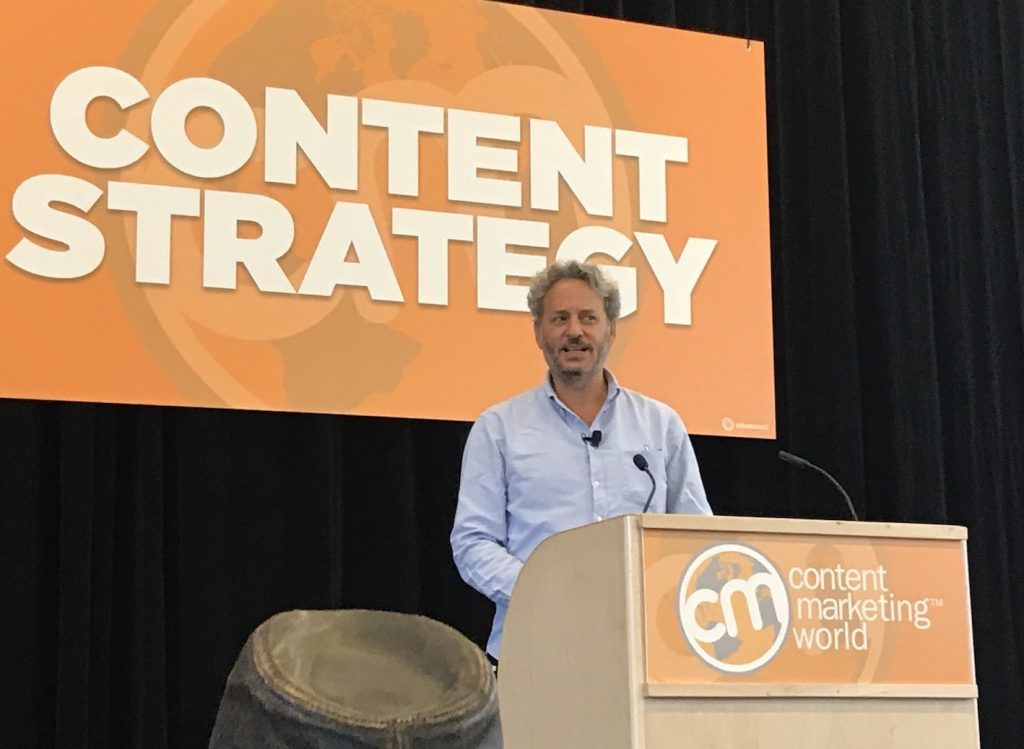For those of us coming up from the south, the best thing about Content Marketing World this year was a break from the Texas heat. OK, maybe I only speak for myself on that one, and the conference packed a lot of benefits beyond the cool breezes I start to forget exist in the thick of August.

Professionally speaking, one of the best things about Content Marketing World was, as usual, the ability to tap into the pulse of what’s happening in the larger content marketing industry. Amongst the insights that came through the chatter at this year’s event was acceptance that content marketing is no longer in its infancy.
Until very recently, content marketers still had to spend a chunk of our time advocating for the industry’s right to exist—making the case for why content marketing was even worth it. While those days aren’t 100% behind us, for the most part, the case for content marketing has been made. Most businesses are past the point of questioning whether they should do content marketing, and have now moved into the phase of figuring out how to do it well.
But the more conversations an industry has around how to do something well, the more the same lines and platitudes start to come up again and again. Multiple sessions this year touched on an unfortunate side effect of our growth as industry: the epidemic of buzzwords.
Robert Rose poked fun at the most common content marketing buzzwords in his talk on opening night to a response of knowing laughter from the crowd. We all recognize them—most of us have used them all at some point.
But the thing about content marketing buzzwords is that they’re not exactly wrong. We do need to care about having empathy, and focusing on our target audience, and storytelling, and optimizing based on analytics, and earning ROI, and all those other things we all hear over and over again.
The problem is that when you hear the same words repeated ad nauseum, they start to lose meaning. Hearing that we should have empathy doesn’t help us figure out how to do so (something Margaret Magnarelli helpfully covered at last year’s Content Marketing World).
Luckily, many speakers provided specific suggestions for ways to break through the buzzwords and turn the generic advice we all know inside out into something you can use.
1. Don’t chase trends.
Joe Pulizzi’s keynote included a list of specific content marketing tips for businesses. One that stood out to me was the simple, but practical message: don’t try to do too much at once.

Anyone that consumes content about content marketing knows that there’s a whole long list of trends that some blog post or video is always saying you must do.
Start a podcast! Invest in influencer marketing! Video content is the wave of the future!
There’s nothing wrong with those tactics and they may well belong in your content marketing strategy. The problem is that you have a limited budget and only so much time in the day. If you spread yourself thin trying to do everything, you won’t succeed at anything.
Instead, Pulizzi recommends that you start with doing one thing well. Put your budget towards just a blog, or just a podcast, or whatever one thing you’re confident you can do a really good job with. Once you’ve built an audience in the channel of your choice, then you can diversify and bring in different content formats and tactics.
2. Make sure “optimization” takes a backseat to your brand story.
Another buzzword we all hear a lot (and not just in the realm of content marketing): optimization. As the martech landscape continually grows and more products that provide analytics come onto the scene, talk of “optimizing” your content strategy is hard to avoid. While creativity is still a big part of the game, content is becoming industrialized. Machines now have a bigger role to play in our conversations.

Doug Kessler from Velocity touched on this in his session about creating a galvanizing story. He was clear that “optimization” isn’t a bad thing. There’s definitely a place for data in building a successful content strategy. But it can’t take the place of having a clear story that defines your brand.
All those different tactics you track metrics for can’t exist in a vacuum—they all have to be connected by a unifying theme. He suggested defining a meaningful brand story first, then telling it in a million different places. Once you have that down, then turn to your data to optimize for things like tactics and strategies.
3. Remember “audience” is more about context than categories.
Content marketers talk a lot about audience. Figuring out who your target audience is and how to talk to them specifically is both an important part of doing content marketing well—and something we’ve all heard so often that it falls firmly in the buzzword category.
Two different speakers touched on an important point that it can be easy to forget about “audience.”

Annie Granatstein from the Washington Post pointed out that “audiences” aren’t rigid categories. Often, there’s overlap between two audience categories you may target, and which category an individual belongs to can change based on what they’re currently doing. For example, the same person approaching your content in a work mindset will interact with it differently than when they’re on vacation.
Similarly, Chris White from Capital One talked about how every person has traits that are constant, and others that become important or dominant temporarily. So someone in your audience can consistently be a movie lover, but when the toilets back up, they care a lot less about what movie they want to see next than figuring out how to fix the problem.
In other words, context matters. A collection of demographic traits isn’t really enough to understand your audience. You also need to consider what they’re dealing with in a given moment. As White pointed out, relevance can make content that would otherwise seem dull riveting.
On a normal day, you’re not going to watch that badly made 10-minute video about how to fix a backed up toilet, but at the moment you need it, you’ll watch it to the end.
If you can manage to deliver relevant content when your audience needs it, they’re more likely to respond well later when you start talking about your products. Capital One’s data shows that people who view blog content are 4 times as likely to click on an ad.
Don’t Let Buzzwords Distract from Creating Useful Content
The buzzwords we’ve all encountered 100 times are common for a reason—they often tie back to worthwhile tips for your business. But you have to filter through generic advice to figure out how it applies to your business and customers.
Content marketing isn’t and never will be a one-size-fits-all solution. This year’s event provided important reminders not to get distracted by the shiny new thing. Focus on what makes sense for your business specifically.